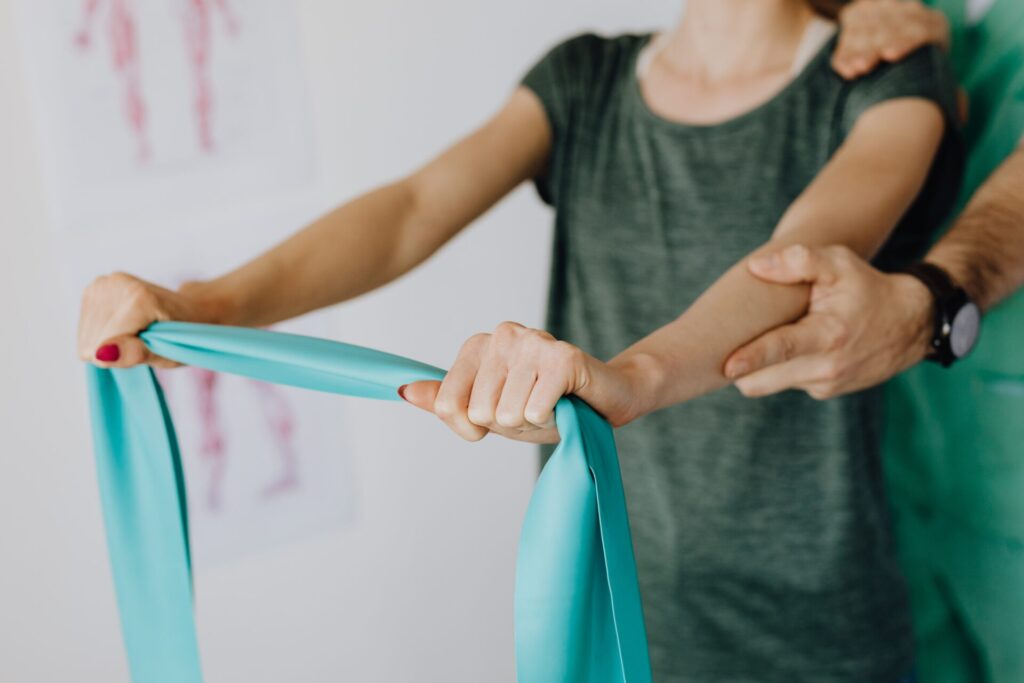The Importance of Post-Surgical Physical Therapy for Rotator Cuff Repair
Introduction
Surgery is often the first line of treatment for orthopedic conditions such as rotator cuff repair. After surgery, physical therapy plays an important role in helping to restore strength and mobility, and aid in returning the patient to their daily activities. In this article, we will discuss the importance of post-operative physical therapy, its goals, phases, techniques used during rehabilitation, the role of a physical therapist, and what the patient can do to support their recovery.
The Importance of Post-Surgical Physical Therapy
Physical therapy has an important role in the post-surgical recovery process for rotator cuff repair. After undergoing surgery, it is essential that you work with a licensed physical therapist to help restore function and maximize your chances of a successful recovery. A physical therapist is an invaluable part of your post-operative team and can provide the best advice on how to safely move forward with rehabilitation.
Goals of Post-Surgical Rotator Cuff Repair
Physical therapy for rotator cuff repair typically has three main goals: reduce pain, restore range of motion, and strengthen the affected area. Your physical therapist will work with you to create an individualized program that is tailored to your specific needs.
How Physical Therapy Reduces Pain
Physical therapy can help reduce post-surgical shoulder pain in a variety of ways. Your physical therapist will work with you to develop exercises that target the affected area in order to increase circulation and decrease inflammation, as well as stretching and strengthening exercises to help restore range of motion and strength. Massage, hot/cold therapies, ultrasound, electrical stimulation, and other modalities are often used to help manage pain and speed up recovery.
How Physical Therapy Restores Range of Motion
Your physical therapist will work with you to develop a program of stretching, strengthening, and joint mobilization exercises designed to restore your range of motion. Your therapist may also utilize techniques such as manual therapy or joint mobilizations to help you achieve your goals.
How Physical Therapy Strengthens the Affected Area
Strengthening exercises are an essential part of post-surgical physical therapy. Your therapist will work with you to develop a program of strength training exercises that target the affected area and help restore muscle strength.
Phases of Post-Surgical Physical Therapy
Post-surgical physical therapy for rotator cuff repair typically consists of three phases: the acute phase, the subacute phase, and the return-to-activity phase. The goal of the acute phase is to reduce pain, swelling, and inflammation. The subacute phase focuses on restoring range of motion and muscle strength. Finally, the return-to-activity phase works to increase endurance and stamina as well as working to prepare you for a return to your pre-injury activities.
Signs of The Acute Phase:
- Pain is usually present and can be managed with ice, compression, or medications
- Swelling may be present and should improve over time
- Range of motion is limited but will increase as inflammation decreases
- Frequent rest periods are needed to reduce fatigue
Signs of The Subacute Phase:
- Pain should have decreased significantly
- The range of motion should have increased and progressed to a near-normal range
- Strength should be returning with gradual increases in resistance exercises
Signs of The Return-To-Activity Phase:
- Pain should be minimal or nonexistent
- Range of motion is normal and muscle strength is returning
- Endurance and stamina are slowly increasing as activities gradually progressed
Techniques Used in Post-Surgical Physical Therapy
The techniques used during postoperative physical therapy will vary depending on the individual and the injury. Common techniques used to rehabilitate after rotator cuff repair include resistance exercises, mobilization, manual therapy, joint mobilization, stretching exercises, ice and heat therapy, electrical stimulation, and ultrasound. Your physical therapist will work with you to determine a plan of care that is best suited for your needs.
Role of a Physical Therapist in Post-Surgical Recovery
The physical therapist is an essential part of your postoperative team. Your PT will assess your current level of function, develop an individualized treatment plan to meet your goals and provide education about the injury and recovery process. The physical therapist will also monitor progress, adjust the treatment plan as needed, and provide support throughout the entire recovery journey.
Patient’s Role in Post-Surgical Physical Therapy
The patient plays a vital role in post-surgical physical therapy. It is important to follow the instructions of your physical therapist, complete all assigned exercises and activities as instructed, and attend all scheduled appointments. Additionally, communication with your PT is key to ensuring that you are getting the most out of each session.
Potential Challenges and Solutions in Post-Surgical Physical Therapy
The post-surgical recovery process is not always easy, and there can be many challenges along the way. Some of the common potential challenges include pain, difficulty doing exercises, poor motivation, and fear of re-injury. However, with a good plan of care developed by your physical therapist, these challenges can be addressed and overcome. Your PT can help you manage pain, modify exercises if needed, design a more enjoyable recovery process, and provide guidance on preventing re-injury.
Conclusion
Post-surgical physical therapy is an important part of the recovery process following rotator cuff repair. Working together with your physical therapist can ensure a successful outcome and help you return to your prior level of function. Your PT will assess your current level of function, develop an individualized treatment plan to meet your goals, provide education about the injury and recovery process, monitor progress, adjust the treatment plan as needed, and provide support throughout the entire recovery journey. Additionally, it is important that the patient follows instructions from their physical therapist and is an active participant in the recovery process. With this collaborative approach, post-surgical physical therapy can help you return to your prior level of function and enjoy life without pain or limitation.

